Points of Interest recommended by Pro Loco
196
km
110
stops
As you wish
duration
196
km
110
stops
As you wish
duration
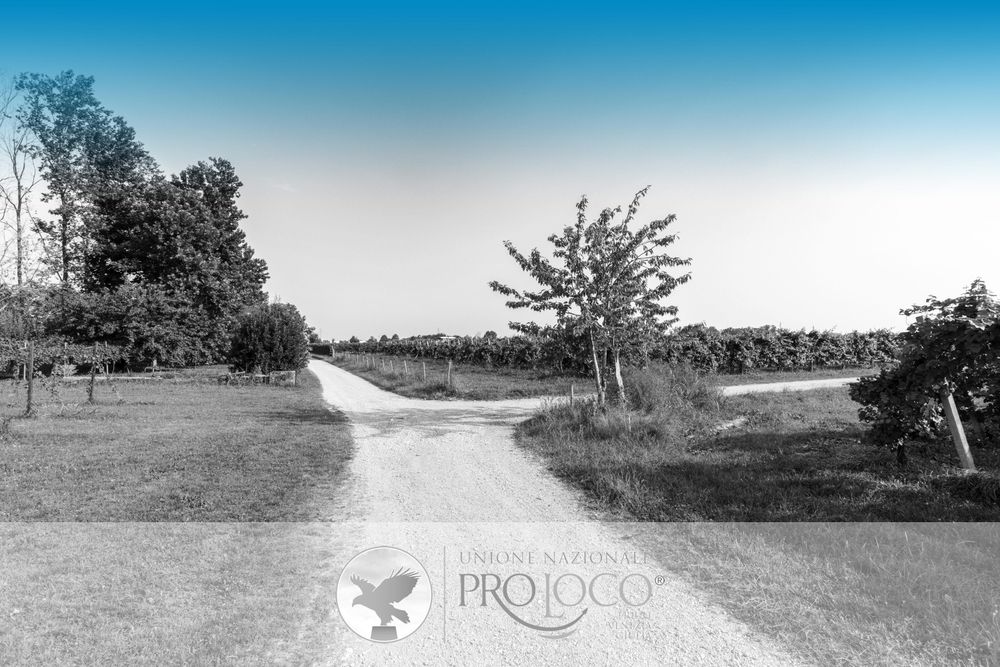
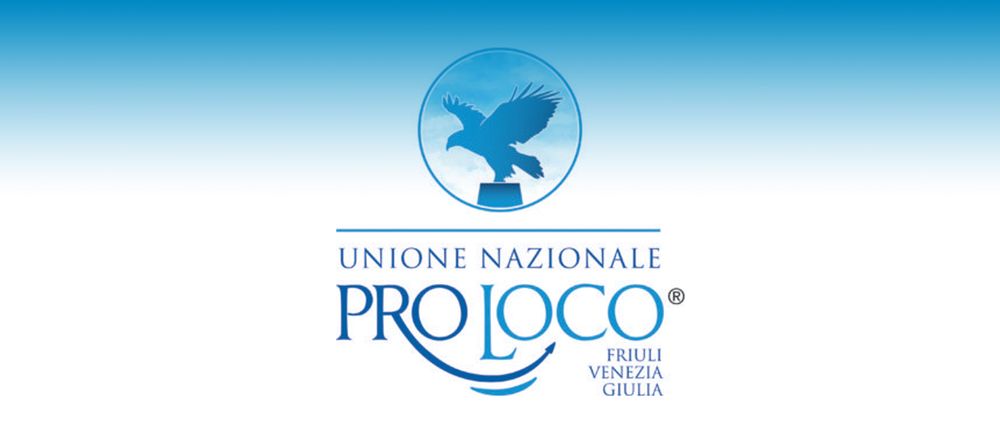
Wash house in Vacile
A glimpse into village life
The wash-house (lavadôrs, in Friulian) in Vacile is among the few remaining in the municipality of Spilimbergo. It is situated along the “di Lestans” irrigation ditch, which originates from the Cosa stream. This structure, which is relatively recent being built between 1959 and 1960, features a concrete basin accessible via a staircase.

Villa Andervolti (now Villa Marzotto)
The 'mechanic' who led the defence of Osoppo
The residential complex, with its medieval roots, has undergone numerous renovations over the centuries. During the 18th and 19th centuries, it was owned by the Andervolti family, with Leonardo as its most distinguished member. His passion for mechanics and remarkable intuitive abilities led him to create solutions that enabled the patriots besieged in the fort of Osoppo in 1848 to resist Austrian forces for months, ultimately earning them military honours upon surrender.

Tagliamento riverbed
The free flight of the falcon
The 'Greto del Tagliamento' Special Conservation Area covers 2719 hectares in the upper Friulian plain, extending from the Pinzano narrow of the river to the Spilimbergo Grava. In this enchanting landscape, characterised by green escarpments (locallly, muculis) and a network of interwoven blue water channels, a variety of animal species find sanctuary, including the stone curlew, honey buzzard, and black kite.
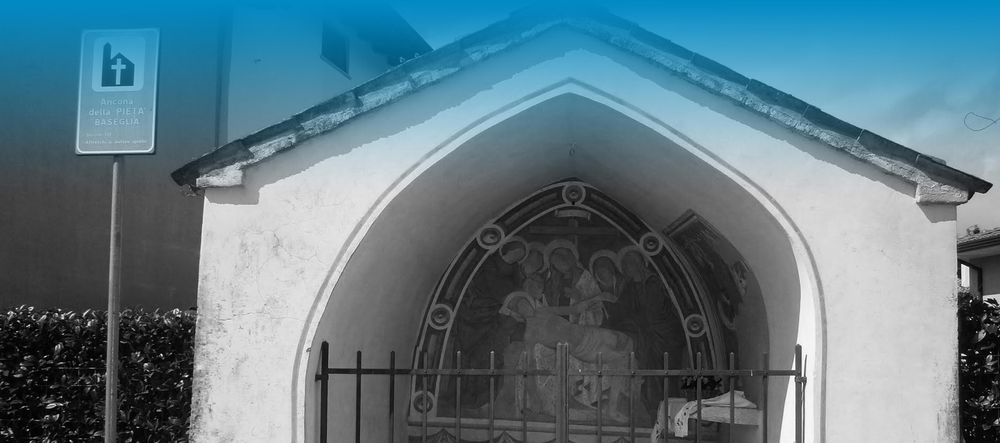
Wayside shrine of the Pietà
An unusual depiction of the Madonna, youthful and stylish
The interior is adorned with a fresco (artist unknown) depicting an unusual Deposition: Christ rests on Mary's knees in the traditional pose; however, Mary's robe deviates from the customary blue, being instead white with intricate damask patterns. Mary is depicted with a youthful face and long, curled blonde hair, almost entirely uncovered. This portrayal exudes elegance and serenity, subtly overshadowing the expected sorrow.
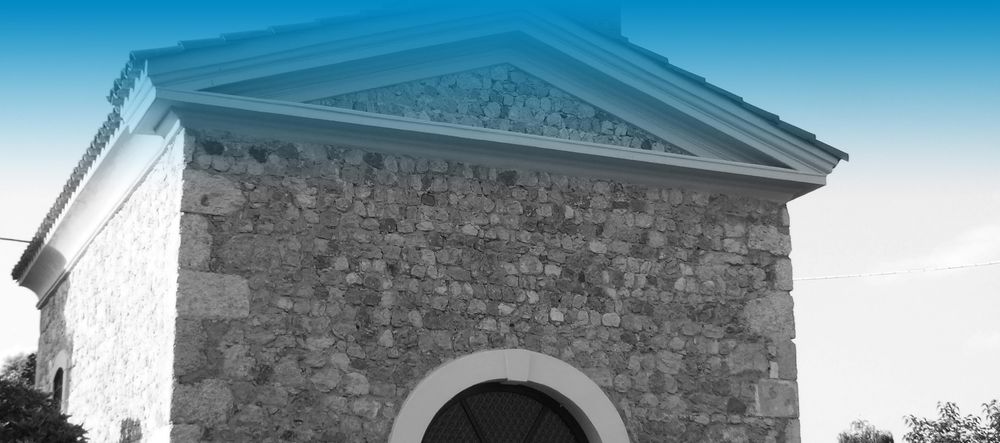
Church of Our Lady of Health
The miracle of the caterpillars
The small building, likely dating back to the early 19th century, was constructed by a member of the Zuliani Suvìla family. The chapel fulfilled a vow to the Virgin Mary, made when their son was gravely ill. Reflecting its era, it contained a Marian icon brought from Russia by an emigrant, along with a dressed wooden statue, now lost, which was once considered miraculous.

Saluzzo Cavalry Charge Monument
The last cavalry charge of the Great War
Located in the countryside between Istrago and Tauriano, the monument commemorates the battle fought on 2 November 1918—just two days before the Great War ended—where the Saluzzo Cavalry Regiment, led by Captain Raffaele Libroia, defeated a retreating Austro-Hungarian battalion. Tragically, the commander lost his life in the attack.
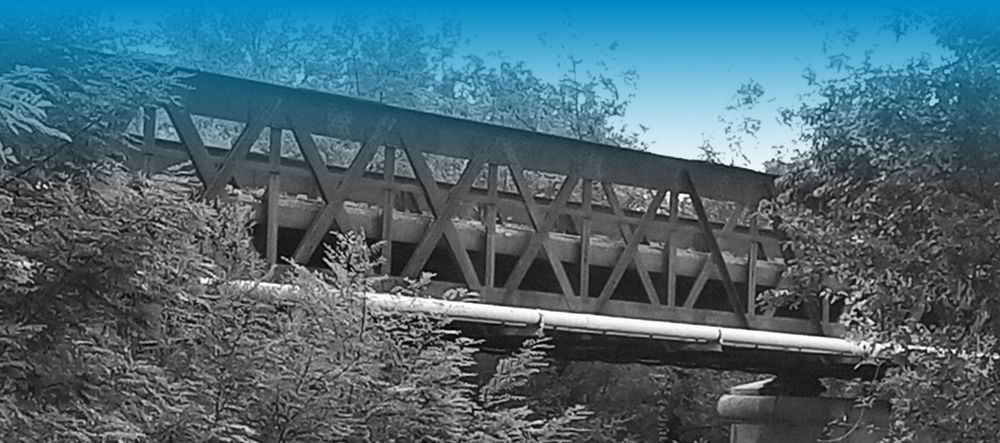
Iron Bridge
A Bridge to catch Your train
Until the late 19th century, crossing the Cosa stream in Spilimbergo's territory was done through a ford or via temporary footbridges. However, during periods of heavy rain, this became a real problem. The establishment of the Casarsa-Spilimbergo railway line in 1893 prompted the construction of an iron bridge. The rigid train schedule was no longer subject to the whims of floods and rain.
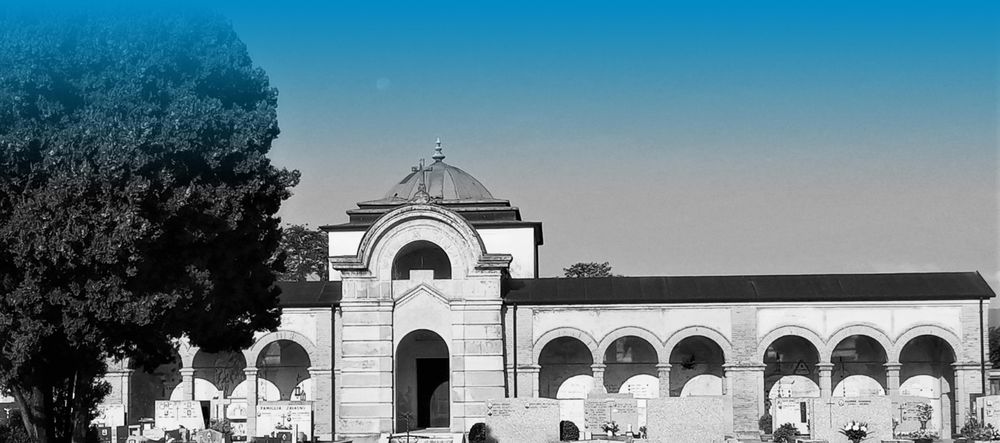
Spilimbergo Cemetery (historical section)
Artistic mosaics and echoes of bygone families
Before 1831, the cemetery was located next to the cathedral. That year, a new facility was built on the outskirts. The first "guest" was Luigi Sarcinelli, known as Brusadin, who was laid to rest on 24 November of the same year. Among the many noteworthy tombs, the small temple of the Ciriani Family—an influential yet troubled family of the early 20th century—stands out on the right. Also notable are the burial sites of the last descendants of the Counts of Spilimbergo.

Old Spinning Mill
Where the songs of the spinning women once echoed
Originally established as a mill in the early 19th century, the complex was transformed into a spinning mill in 1888. It featured 40 basins and employed 68 workers, each working an average of 200 days per year. The silk produced was then traded on the Milan market. Notably, it was the first building in Spilimbergo to be illuminated with electric light, powered by a 105-amp dynamo. Standing 11 meters tall, it rose prominently like a church on the city's outskirts.
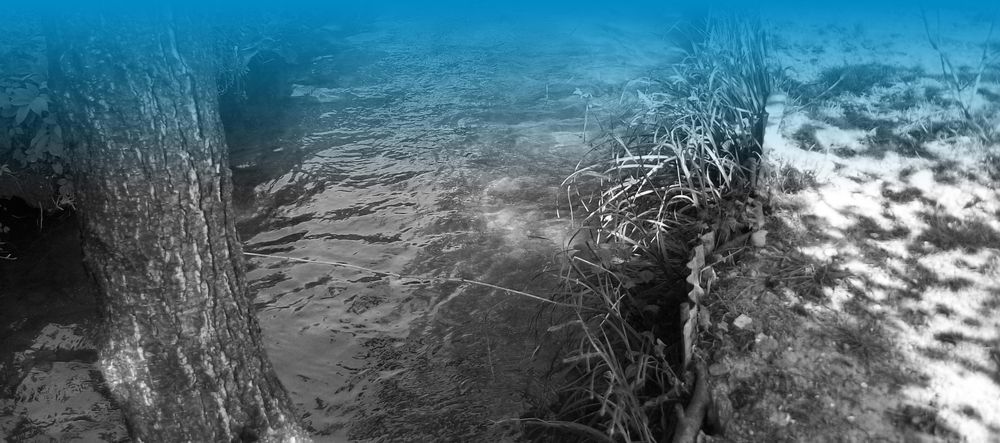
Roggia - The Canal of Spilimbergo
The beauty of water
This artificial waterway was created in the 13th century by redirecting the Cosa stream at Madonna dello Zucco. Flowing through Gaio and Baseglia, the water still today reaches Spilimbergo and continues to Gradisca, where it joins the Tagliamento. This watercourse was instrumental for city defence, domestic use, and served as a power source for mills and ironworks. Additionally, it functioned as a vital emergency water supply in the event of fires.
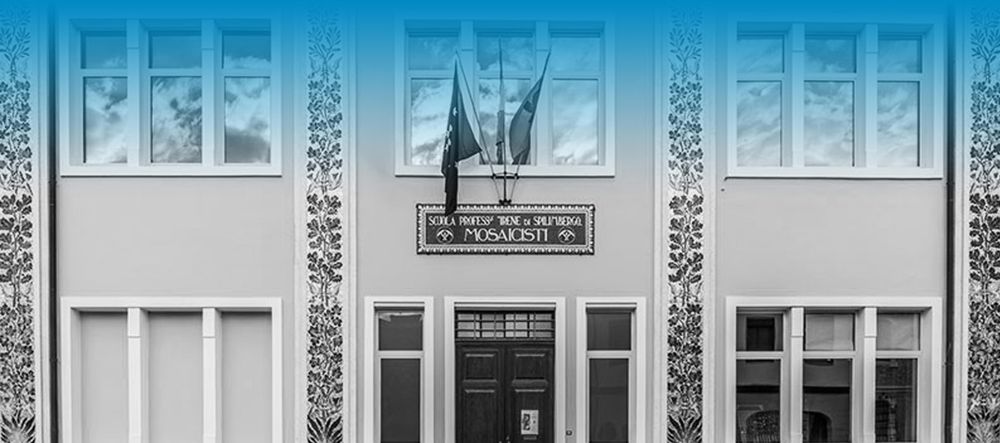
Mosaic School of Friuli
A world of light and colour
Established in 1922, the School was founded to provide professional training for young emigrants, building on the foothill region's long-standing tradition of mosaic and terrazzo craftsmanship. The institution has been the birthplace of numerous significant works, including the decorations of the Foro Italico in Rome, the church of St Irene in Athens, and the Holy Sepulchre in Jerusalem.
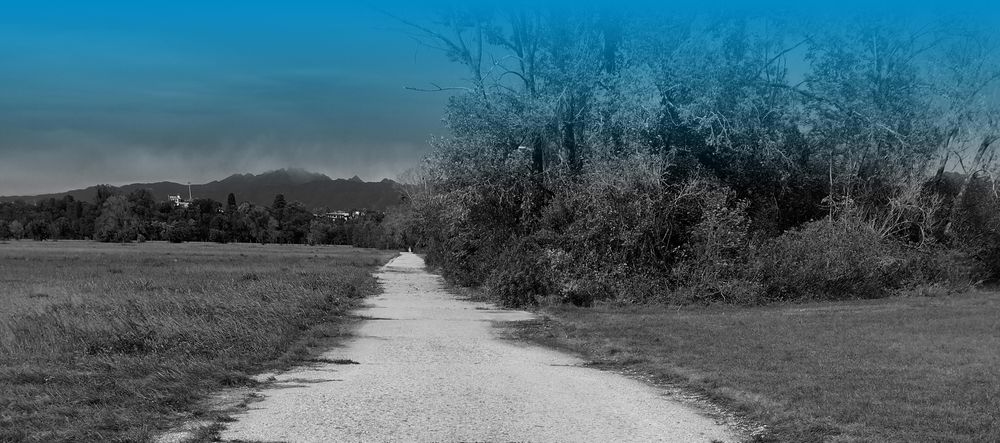
German bunkers and fortifications
The mysteries of WW2
On the road known as riva del macello (slaughterhouse bank), the entrance to air-raid shelters—now walled up—is still clearly visible, set 30 meters into the base of the escarpment. This particular infrastructure, however, represents merely a fraction of the comprehensive engineering endeavours undertaken. The broader complex encompassed a vehicular crossing for armoured units over the Tagliamento River, as well as a military installation situated within the river's bed itself.
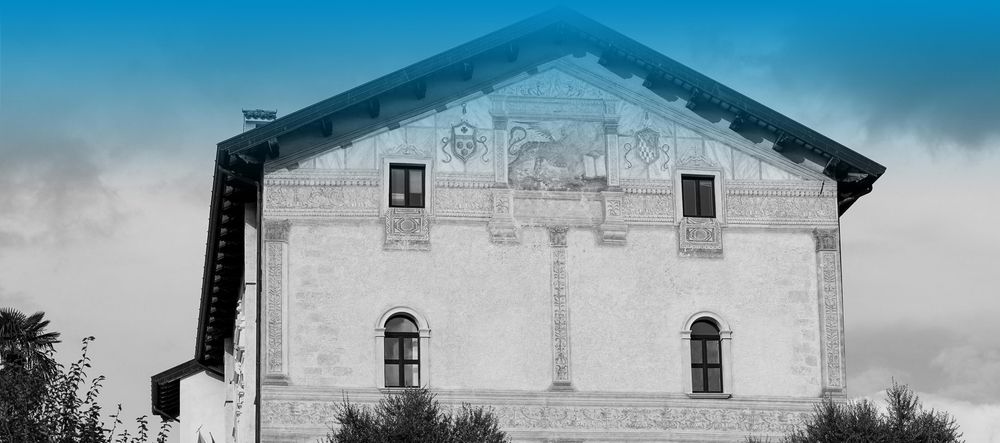
Palazzo degli Spilimbergo di Sopra (locally known as Palazzo di Sopra; Town Hall)
Risen from the ruins
Once the seat of a branch of the Spilimbergo family, this edifice briefly housed a prestigious Renaissance academy. However, the academy soon closed due to suspicions of heresy. The building, adorned with external frescoes, boasts splendid 18th-century stuccoes in its interior rooms. After falling into ruin following an earthquake, it narrowly escaped demolition and underwent complete restoration.

City Hall of Spilimbergo
The city barn
Constructed in the 14th century, this edifice epitomised the concept of a public building. It served multiple functions: the Lords of Spilimbergo utilised it to assemble their military forces, while it simultaneously facilitated market negotiations, goods storage, legal proceedings, and notarial activities. For a period, it even served as a prison. In the 19th century, the structure underwent a transformation, becoming the home of the social theatre.

Macia
A menorah on the market square
Behind a column of the Municipal Loggia, an etched illustration resembles a Jewish menorah. This is the macia, a linear measurement employed by textile merchants in the city's marketplace—one of Friuli's main trading hubs, notably referenced in 14th-century Tuscan records.

Palazzo Tadea
The stubbornness of the Widow Tadea
This late Renaissance structure, rising three stories, exhibits refined and understated architectural elements. The central entrance, featuring the nobility's coat of arms, artfully incorporates a round arch of exposed ashlar stonework with a relief tympanum evocative of classical Greek temples. Inside, the first-floor hall boasts exquisite 16th-century stucco decorations. Today, the building serves as a venue for musical concerts and art exhibitions.

Palazzo Dipinto
The manifesto of Friulian nobility
The Palazzo Dipinto represents the final addition to the castle's architectural ensemble. Its late construction fortuitously spared it from the devastation of 1511. Its façade is entirely covered in colourful, symbolic Renaissance frescoes. Historically, a stone effigy of the Lion of St. Mark also graced the façade. However, it was sold and removed in the latter part of the 19th century. Presently, this leonine sculpture is exhibited at the Museum of Fine Arts in Lyon.
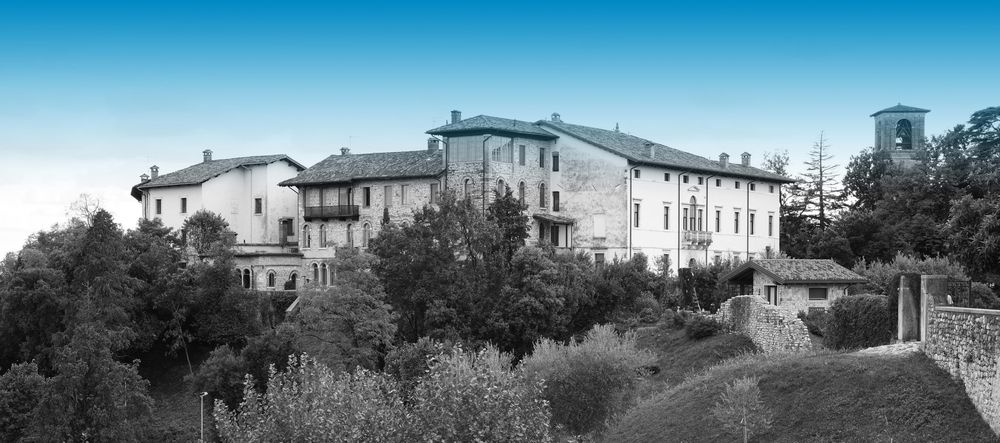
Castle of Spilimbergo
The castle on falcon hill
In its current form, the defence complex presents a horseshoe configuration featuring elegant Renaissance architecture—a stark contrast to its early appearance. Originally, the core structure comprised a watchtower and a residential palace, protected by a strong circular wall (giron). Behind this wall stood the buildings essential for daily operations: dwellings, stables, warehouses, and sheds.

Church of Santa Cecilia
The origins of this church date back to ancient times
The dedication to Cecilia suggests it may date back to before the year 1000, making it older than any other known building in Spilimbergo. Above the side door are two small stone statues of St. Peter and St. Cecilia, adorned with a Lombard-style cross. During the Middle Ages, it served as a venue for gatherings of family leaders, who collaborated with the feudal lords in managing the village's affairs.

Cathedral of Santa Maria Maggiore
Jewel of Friulian art
The main church of Spilimbergo, commissioned by the Lords of Spilimbergo and financed with loans from Florentine bankers, boasts an impressive collection of late medieval and Renaissance artworks. Notable treasures include a 14th-century fresco cycle in the apse (from the school of Vitale da Bologna), a 16th-century organ decorated by Il Pordenone, an altar by Carmine featuring an exquisite balustrade by Pilacorte.

Cathedral Crypt
Where the Lord of the city rests, guarded by his lions
In addition to its structural importance, the crypt serves as a repository for significant historical artefacts of the city. These range from the altar of St. Leonard—commissioned by Paolo di Spilimbergo in gratitude for surviving a 15th-century Turkish incursion in Friuli—to the sarcophagus of Walter Pertoldo IV, renowned for his military and political contributions.

The painted house (also known as Palazzo Ercole)
An unusual business card
The building's façade presents a visual narrative of the Greek hero's life, artfully rendered on two distinct levels, separated by expansive decorative bands. The lower level features Hercules fighting the Nemean lion, —the first of his twelve legendary labours. The upper level displays two compelling scenes: to the left, the dramatic Abduction of Deianira (Hercules' wife) by the centaur Nessus, and to the right, The centaur Chiron, revered as Hercules' mentor.

Palazzo Monaco
The frescoes that emerged from the flames
The Monaco family, originally from Bergamo before relocating to Friuli in the mid-16th century, held a position of prominence in the region. Alongside other notable families they constituted the town's social and cultural elite for centuries. While Palazzo Monaco underwent a successful restoration to its former glory, the adjacent Palazzo Cisternini unfortunately met a different fate—succumbing to flames set by Russian soldiers during a military campaign against Napoleon.

Palazzo Stella (also Palazzo Zatti)
The scientist's house
The Stella family, originally from Bergamo, rose to prominence in Spilimberg society, particularly during the 16th and 17th centuries. The building's façade features a striking first-floor three-mullioned window encompassed by a balcony. This architectural feature is supported by four intriguing stone corbels—the outer two adorned with human facesone—one bearded, the other smooth.

Church of San Giovanni Battista (erroneously said: Church of the Battuti)
The first hospital
The influential confraternity of San Giovanni dei Battuti, devoted to act of mercy and politically engaged in protecting the interests of the bourgeoisie against the Lords of Spilimbergo, founded a hospital to care for pilgrims and the needy. They also oversaw the construction of the nearby church and important works of art.

Church of Santi Giuseppe and Pantaleone (locally known as: Chiesa dei Frati)
A masterpiece of wood art
The building underwent a thorough restoration that highlight its original architectural features. However, its fame primarily stems from the 15th-century wooden choir by Marco Cozzi, which was originally part of the cathedral. This masterpiece is intricately carved and inlaid with detailed figures in high relief and adorned with turquoise and gold enamel decorations.

Church of San Rocco in Spilimbergo
When the plague rages
In response to the 1533 epidemic that claimed 450 lives in just three months, the residents of Spilimbergo vowed to Our Lady and Saint Roch to erect a church in their honour in exchange for protection from further harm. Consequently, the church of San Rocco was established outside the city walls, and it has since been charished by the community.

Villa Marin (originally Villa Lidia, now Villa Sina)
Residences of the New Elite
Having relocated from Val d'Arzino, the Marin family, led by attorney Marco Marin, epitomised financial success and social standing. Rather than acquiring a historic property in the city centre, they opted to commission a bespoke residence in the suburbs. The resulting villa, featuring a generous porch, distinctive corner tower, extensive gardens, and abundant natural light through skylights, bears a striking resemblance to the architectural styles prevalent in Northern Europe.

Hospital Chapel
Golden tesserae for the suffering
Situated on the hospital's first floor, the room is notable for its extensive use of gilded mosaic, providing exceptional brightness. The wall mosaics, featuring the Virgin Mary along with the two 'Spilimberg saints,' Pantaleone and John the Baptist, were created on cartoons by artist Fred Pittino in 1957 and 1958, with assistance from several local mosaic artists.

Villa Tamai
The triumph of Art Nouveau
The villa, built in the Art Nouveau style in 1925, was the work of engineer Angelo Zanettini, a respected designer and builder of the time, whoo was also a descendant of Count Giacomo Ceconi's family. Situated on a road linking the railway station to the bridge over the Tagliamento River, the villa was enveloped by a 13,000 square meter park. During the Second World War, it served as the headquarters for Captain Neumann's SS.
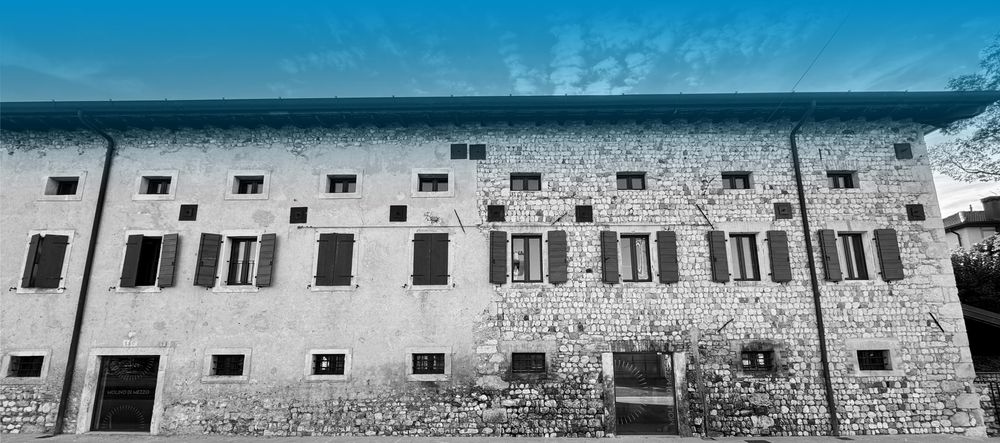
Molino di Mezzo (also Prussia Mill or Gridello Mill)
The millstones that fed the city
The mill has been confirmed to exist since 1391 and was owned by the Lords of Spilimbergo, who delegated its operation to various miller families. Until 1947, the mill had three external wheels, each aligned with a stone millstone. In addition to grinding cereals, it was also utilised for processing codfish. Today, it has been restored and serves educational and demonstration purposes.

Chapel of San Giovanni Eremita
The acrobatic dance of Salome
The building, largely torn down in 1909, was connected to a medieval hospital on the northern outskirts of Spilimbergo, near a ford. The 14th-century painted apse has survived, drawing attention with images that depict the events surrounding John the Baptist's beheading, decreed by Herod to fulfill the wish of his stepdaughter, Salome.

Cortina di Barbeano
Ultimate refuge for the villagers
Initially, this curtain wall functioned as a protective barrier, with the church at its centre. Over time, houses were built adjacent to the wall, incorporating it into their structure. These new buildings remained under ecclesiastical ownership, with the church retaining the right to collect rent. The overall architectural composition maintained the semblance of a fortified complex—their outer walls had few openings, while access to the houses was from the inner square.

Church of Santa Maria Maddalena
The Adventures of a Bell Tower
Consecrated in 1459 and completely rebuilt between 1882 and 1890, the church retains its Renaissance portal by Carlo da Carona, adorned with bas-relief figures. Inside, the marble high altar—which replaced the 15th-century wooden one—was crafted in 1775 by Francesco Sabbadini. It features statues of St. Mary Magdalene and St. Vincent Ferrari.

Machine gun emplacement
A machine gun to defend the bridge
Initially conceived as a contingency measure for an improbable retreat, this strategic point proved crucial in late October 1917. German invasion forces, upon reaching Dignano and Bonzicco, attempted to traverse the Bonzicco footbridge. Italian soldiers maintained their position until November 4, at which point they received directives to withdraw to the Piave River.

Church of Our Lady of Fatima (also Queen of Peace; popularly Our Lady of Cholera)
Protection against cholera
Initially, a modest wayside shrine dedicated to Our Lady of Health stood at the entrance of the path leading to the ford on the Tagliamento. In 1944, this shrine was replaced by the current church structure. The church now houses two notable pieces of sacred art: a wax statue depicting the Child Mary and a wooden statue representing the Virgin with Child. In accordance with longstanding tradition, both statues are adorned with elaborate garments.

Church of Santo Stefano in Gradisca
A long struggle
The church is situated in a non-central location, on the road leading from the village to the ford on the Cosa stream. It remained under the jurisdiction of its counterparts across the waterway for centuries, ultimately achieving autonomy in 1858. Inside, it houses four statues—masterpieces of contemporary wooden art. Two of these statues, Our Lady of the Belt and St. Anthony of Padua, are still carried annually in procession through the village streets.

Aedicula of San Francesco
When faith radiates tenderness
The shrine features a Madonna of Tenderness with Saint Francis. The original painting dates back to the 17th century and was restored in 2010 by artist Plinio Missana. This heartfelt restoration was commissioned by Lindo Truant, a local resident, in memory of his brother Tarcisio and other soldiers who bravely fell in Russia during World War II. This serves as a reminder that faith and devotion continue to flourish today.

Church of Sant’Antonio and Maria Ausiliatrice (also: Cemetery Church)
For the souls in Purgatory
The Provesano cemetery was later relocated to its current site in the early 19th century, where another small church was built for funeral services. The parish priest at that time, motivated by a strong religious spirit, commissioned a painting to convey hope, in which two angels rescue penitent souls from purgatory, freeing them from the flames. A difficult-to-read inscription explains the reasoning behind this.
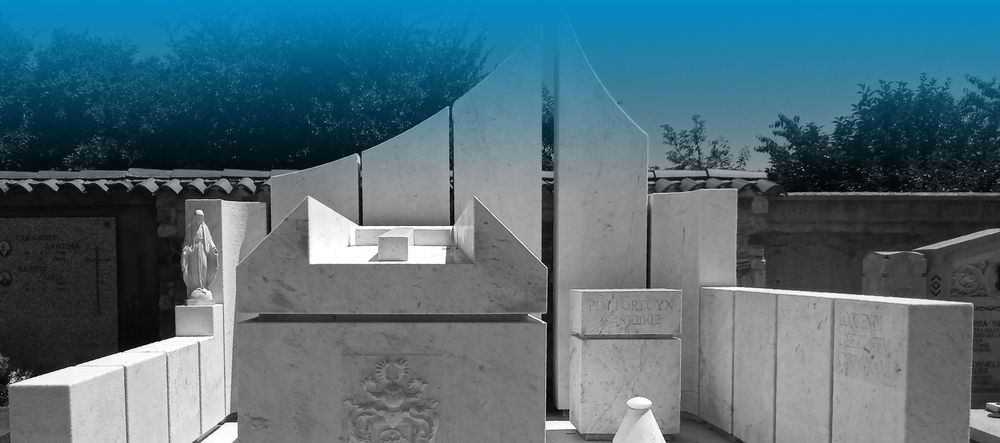
Pim Fortuyn’s Tomb
The Dutch politician's final resting place
The tomb, crafted from white Carrara marble, has a monumental appearance. It features a central sarcophagus adorned with the Fortuyn family coat of arms, surrounded by white elements on three sides. Behind it, a backdrop seems to reach for the sky. On the right, a Latin inscription reads: Loquendi libertatem custodiamus, which means "we protect freedom of speech." For years, many Dutch citizens have visited the grave, either passing by on their way south or spending their holidays in the region.

Passion Cross
The Passion of Christ told through symbols
Positioned at a crossroads, the cross features simple wrought-iron blades adorned with symbols that, when interpreted correctly, tell the story of the Passion of Christ leading up to Easter, from the Last Supper to his death. Passion Crosses were once key elements of the Holy Week processions, providing an easy-to-understand guide for the common people.

Aedicula of Sant’Osvaldo
The Legend of St Oswald
The Pozzo aedicula features the Madonna and Child Enthroned between St. Oswald and St. Anthony of Padua. This 17th-century artwork, created by an unknown artist from Friuli, was commissioned by Giovanni Battista Pascutto as an act of devotion. What sets this painting apart is the inclusion of St. Oswald, who is the king of Northumbria, a Christian martyr, and the protagonist of a knightly poem in which he attempts to win the heart of a princess.

Church of San Giorgio
The heyday of Gothic Revival
The first church of San Giorgio della Richinvelda is said to have been built in the 9th century and then remodelled several times, culminating in a final reconstruction in 1885 that adhered to the Gothic Revival style popular in Italy at the time. Above the portal, a high relief shows Saint George dressed as a medieval knight, fighting the dragon symbolising the devil.
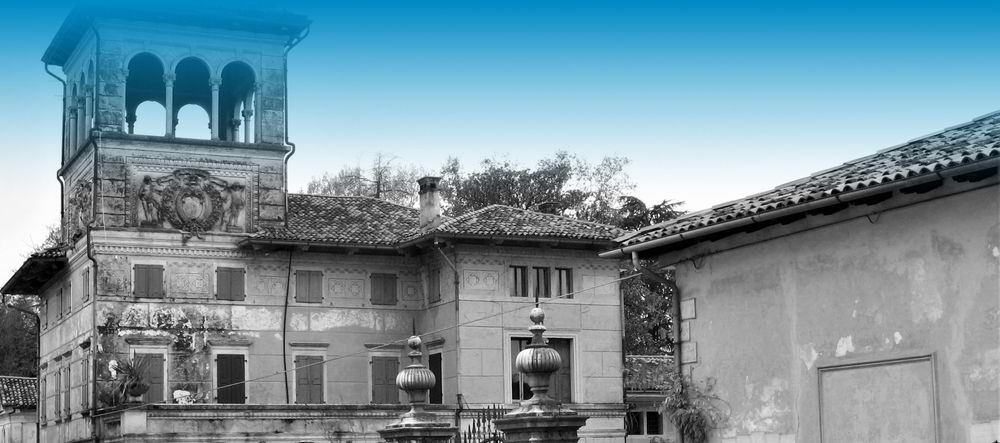
Villa Leoni (also Villa Pecile)
The heart of agricultural change
The building, previously owned by the Leoni family from Veneto, was purchased in 1851 by Senator Gabriele Luigi Pecile. His son Domenico took over managing the farm, experimenting with new crops and introducing the first farming machinery. The income from the land improved, and the estate expanded with the construction of farmhouses, stables, and fodder silos.

Church of San Lorenzo
The precious legacy left by Umberto Martina
The current building, constructed in 1855 based on a design by Girolamo D'Aronco, replaced the previous church, which had become too small for the congregation's needs. The building is notable for the frescoes on its façade, but its true treasure lies inside: a precious canvas painted by Umberto Martina in the early 20th century depicting the Charity of Saint Lawrence. This work suffered significant damage during WWII.

Aedicula of San Pietro
A road showcasing sacred paintings of the 17th century
Votive frescoes, altarpieces, and capitals were used in the past as stations along the paths of various religious ceremonies, such as traditional rogation processions, the Way of the Cross, and patron saint processions. The village of Aurava has kept the old terraced rural houses, unlike many other places where traditional buildings have been replaced with modern ones. This has allowed not only to save some minor works of art but also to preserve their significance.

Church of San Giovanni Battista
A church disputed
Originally built as a private chapel at the behest of the wealthy D'Agostini family, the building has remained largely unchanged. Its position between Rauscedo and Domanins sparked tensions between the two communities in the 20th century. The tensions escalated into a general brawl on 29 May 1939, with fists and slaps exchanged, while the two parish priests struggled to calm things down. The matter was finally settled in 1950.

Villa Spilimbergo-Spanio
From fortified castle to country mansion
Inside, the atrium was frescoed in the early 19th century by Giovanni Battista Canal and Giuseppe Borsato. The mansion houses two portraits of Irene di Spilimbergo and her sister Emilia, attributed to Titian and acquired by an American collector in London in 1909. The garden features masterpieces by contemporary sculptor Ivan Theimer. Nearby, the chapel dedicated to St. Eurosia the Martyr showcases a portal by Renaissance sculptor Pilacorte.

Church of San Michele Arcangelo in Domanins
The procession of the confraternity
The current neoclassical building was designed by engineer Giovanni Battista Cavedalis (1794-1858), who later became a key figure in the Risorgimento uprisings in Friuli. The bell tower faced a couple of challenges. First, construction work was delayed due to heavy emigration, which led to a reduction in funds; then, once completed, a whirlwind damaged the spire.

Glesiut (Chapel of San Giorgio)
One of the last “clothed” Madonna statues
Clothed Madonna statues were made from wax or wood and dressed in real robes often made of silk and adorned with crowns, necklaces, earrings, and other jewellery. Women were instrumental in dressing these statues, making it a ritualistic practice. These statues were used in processions until the Church started phasing them out from the mid-19th century onwards.

Centa (Defensive walls) in San Martino
The futile defence against the Turks
The embankment on which the church of San Martino stands was originally a centa or cortina, a common defensive structure in rural villages of Friuli during the Middle Ages. Once a refuge tower, the bell tower was also part of this structure. However, the locals were helpless during the Turkish raid of 1499. Skender Pasha's troops bypassed the nearby better-fortified Valvasone and attacked the village, resulting in deaths and kidnappings.

Casa Cassini
An archaeological museum in a house
The house is named after the Cassini family, who moved to Friuli in 1280 from Lombardy. They were affluent and owned extensive properties on both sides of the Tagliamento River. The original building, dating back to the 17th century, looks imposing but is softened by an Italian-style garden. This building contains a collection of Roman inscriptions from Aquileia and Concordia, collected in the 19th century by the owners, who were passionate about archaeology.
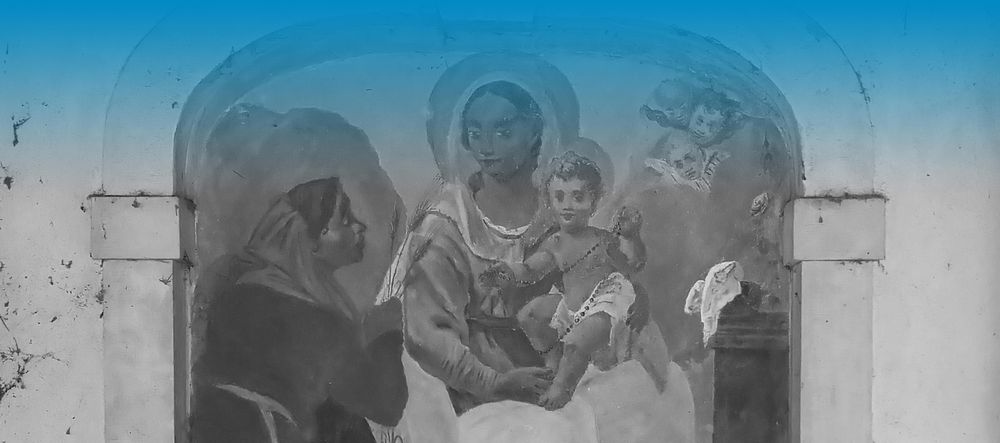
Chapel of Santa Fosca
A shrine from early Christian times?
The small shrine's origins are ancient, though pinpointing an exact era is challenging. In 1970, the chapel was relocated to accommodate road expansion. Inside, it features a fresco of the Madonna of the Rosary with Saint Fosca, attributed to San Vito painter Agostino Pantaleoni (1740-1817). A tombstone placed in the middle of the floor indicates the Cassini family's ownership.

Mosaic of San Martino
A sword among river stones
The mosaic was crafted from tiles and stones in 2006 by the arts association Claps Colorâs. It portrays Martin on horseback, cutting his red cloak with his sword. What distinguishes this piece is the blend of the main image with the characteristic landscape of the pebbly shore of the Tagliamento, known as Grava, with the profile of the Friulian mountains in the background.

Church of the Nativity of Mary (known as Church of the Madonna)
Fighting back the fear of plagues
The Church of the Madonna in Postoncicco, reconstructed in the 17th century, is a modest yet significant building. During the restoration in 1982, extensive sections of frescoes, probably from the 15th or 16th century, were revealed. Madonna Enthroned with Child and Saints Cosmas, Rocco, Sebastian, and Damian is a significant fresco. These four saints are associated with disease, reflecting the people's ongoing fear of epidemics.

Wash house in San Martino
A place to do the laundry and … indulge in chats
The lavadôr (washhouse) of Postoncicco is the most significant remaining structure of its kind in the territory of San Martino al Tagliamento. Up until the mid-20th century, there were 13 washhouses scattered around the area. Sometimes, there were little hiccups with traffic. The washerwomen had to avoid doing the laundry when the cows visited the watering point.
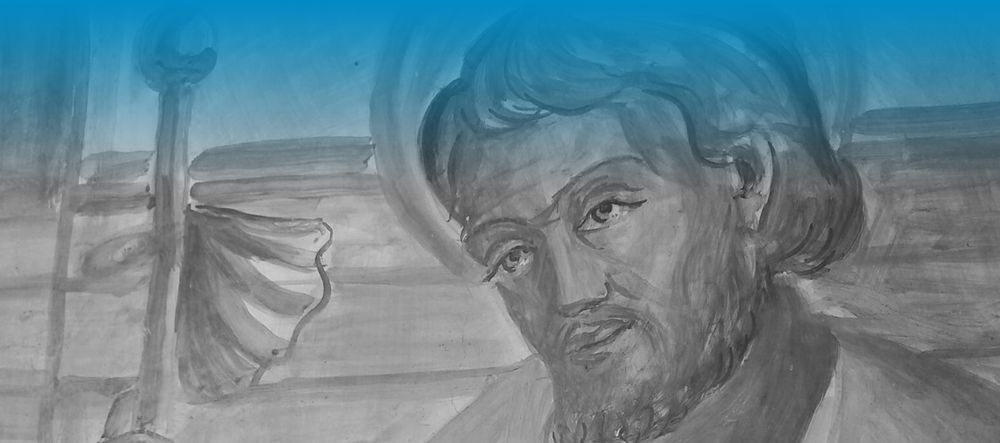
Aedicula of San Rocco in San Martino
The Sleeping Baby Jesus
The painting you see today is actually a sinopia, a preparatory drawing in red ochre similar to those made before a fresco. This drawing, created at the end of the 20th century, replaces the now illegible original, which likely depicted the same subject. Based on the frame decorations, the original altarpiece dates between the late 15th century and the first half of the 16th century.

Chapel of the Crips (also: Madonna of the Crips)
The willpower of an emigrant
In the 19th century, Pagnucco's father acquired a painting of Our Lady of the Rosary, which had once belonged to the Servite friars of Valvasone. Giuseppe, the youngest son, inherited the painting and became so attached to it that, even after emigrating to South America, he dreamt of building a chapel in his hometown. Despite facing financial and family challenges, he accomplished his goal with admirable tenacity.

Church of San Michele Arcangelo in Arzene
A church lovingly built by the hands of the parishioners.
The old church, dating back to the 15th century, was replaced in the 20th century after a lengthy process, fulfilling the wishes of the parishioners. Several works from past centuries are still preserved, including the polychrome altar from 1689 and a delicate wooden altarpiece depicting Mary and Child between Saints Laurence and Florian, two popular saints invoked against disease and fire.

Rio Rupa
The stream that brought life to the villages
The torrent, originating from the waters of the Cosa, once played key urban and civic roles. It flowed through the entire village of Arzene, passing by the protective wall of the Church dedicated to Saint Michael the Archangel. Splitting into two branches, it encircled San Lorenzo, creating an almost island-like effect. However, due to frequent flooding, the main riverbed was filled in with gravel in 1712, and a road was constructed in its place.
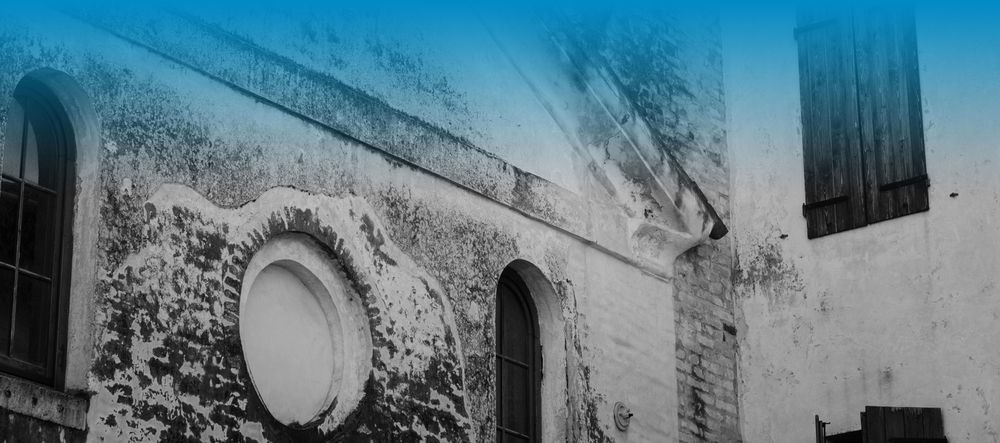
Church and former hospital of Santi Pietro, Paolo e Antonio abate
San Pietro: from hospital to treasure chest of art
Consecrated in 1497, this church features an extensive pictorial cycle from the early 16th century by Pietro da Vicenza, along with works from the 14th, 17th, and 19th centuries. Above the entrance to the church, there is a rare 18th-century portative organ. Initially serving as a hospital for pilgrims and travellers passing through the village, it is remarkable how it has transformed into a treasure trove of art, thanks to the dedication of the people of Valvasone over the centuries.

Town Hall (formerly Palazzo Della Donna)
The two lives of a palazzo
Overlooking Piazza Mercato, just outside the second circle of walls that once protected the village, the palazzo, indeed, dates back to medieval times. During restoration works in the 18th century, some interior paintings from the early 15th century were rediscovered. The palazzo was remodelled, giving it the grand look it boasts today, except for a surviving corner column that adds a touch of effortless elegance.
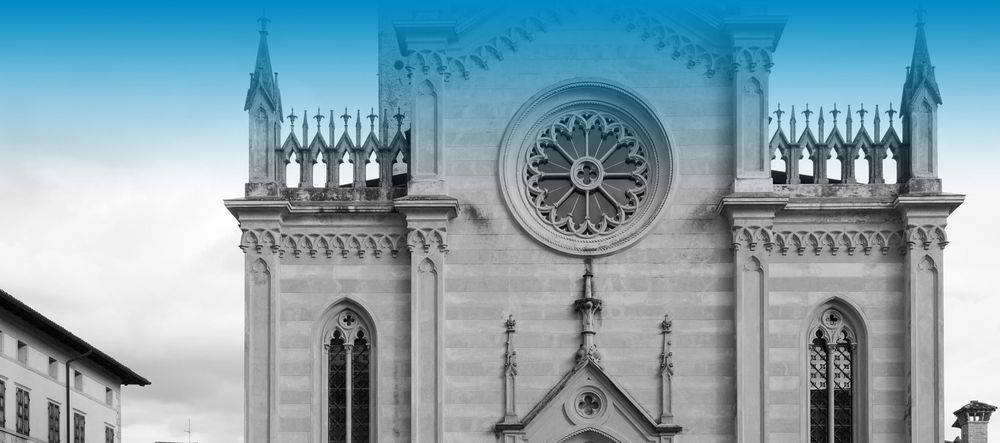
Duomo of the Santissimo Corpo di Cristo
The miracle of the altar cloth
Before the cathedral was built, the main church in Valvasone was Santa Maria e Giovanni, located outside the town walls. The pivotal moment was the Eucharistic miracle that occurred in 1294 in Gruaro, a fiefdom of the Lords of Valvasone. After washing an altar cloth without realising it contained a Holy Host the priest had accidentally dropped, the housekeeper witnessed a blood stain appear on the white cloth. The blood-stained altar cloth is still preserved in the tabernacle on the high altar.

Renaissance organ in Valvasone
The only 16th century Venetian organ in Italy
The organ in Valvasone Cathedral stands out as the last remaining Venetian Renaissance organ. Crafted in the 16th century by Vincenzo Colombo, the exquisite artistic decorations on the chancel and doors further elevate its prestige. These decorations were initially created by Il Pordenone and later completed by his son-in-law, Pomponio Amalteo, after Pordenone's passing. It is truly a masterpiece of music and art.
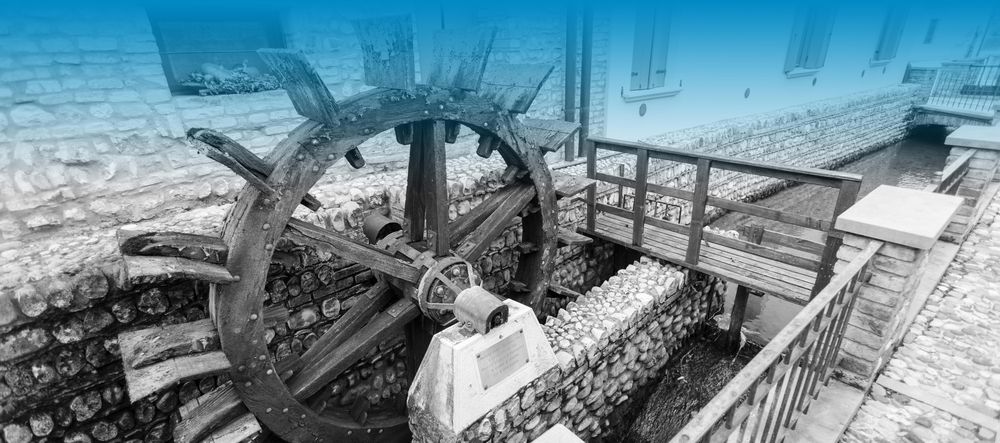
Valvasone Mill
A mill wheel called Irma
A building that once served as a mill is tucked away in the narrow alleys of Valvasone's historic centre. Although it had fallen into disrepair over time and lay unused, recent restorations of both the structure and its beautiful exterior paintings have brought back its ancient charm. In 1994, the mill wheel reappeared—not the original, but a lovingly crafted new one, generously donated by talented local artisans for the community to enjoy.
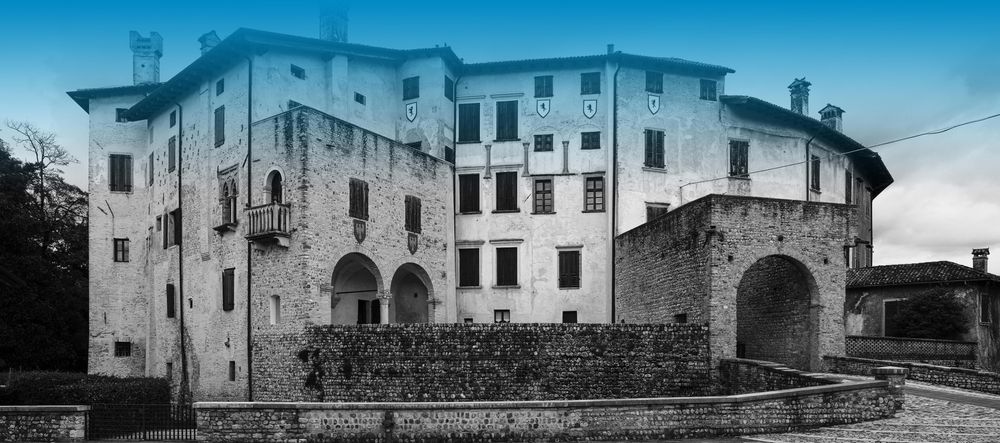
Castle of Valvasone
A castle fit for Napoleon
The castle dates back to the early 13th century and has evolved and expanded over time. It withstood a Turkish attack in 1499 but succumbed to the popular uprising of 1511. Visitors are welcomed by stunning interiors that include an intimate theatre with finely decorated wood panelling, a fully frescoed hall, Napoleon Bonaparte's guest quarters, a grand kitchen with a hearth, a charming Baroque chapel, and even its own boat mooring!

Hall of frescoes
The donkey teaching the wolf
The castle of Valvasone never ceases to amaze. During the restoration of a hall on the ground floor, elegant 15th-century frescoes were discovered beneath the plaster. Surprisingly, even older 14th-century paintings were found below, which still need to be fully interpreted. One scene depicts a lady accompanied by two valets paying homage to a noble knight; another portrays a donkey seated on a chair attempting to explain a document to a reluctant wolf.

Castle Theatre
The last 18th-century theatre
The ground-floor hall showcases a unique example of an 18th-century style private theatre, even though it was actually built in the early 19th century. It features a row of boxes with beautifully decorated wooden panelling. The central box, elevated above the others, was reserved for the castellan's family, while the remaining eight boxes, evenly distributed on both sides, were meant for guests. Sadly, the original stage was sold in the 1930s and longer present.

Parco Pinni
Erasmus, who was he?
In the park next to Valvasone castle, now a lovely public green space honouring fellow citizens who fell in all wars, there is a bust of Erasmus of the Lords of Valvasone under the branches of a locust tree. He is celebrated as Friuli's most extraordinary 16th-century man of letters and one of the notable Italian poets of the era, primarily known for his poem La caccia.

Borgo Alpi (also: Borgo delle Oche)
A bygone world
The town grew near the old walls of Valvasone, along the irrigation ditch that supported its defensive and production systems. The numerous stone houses with traditional architecture and cobblestone streets create a unique atmosphere. At the beginning of the street, the 17th-century Palazzo Tamburlini, with its distinctive protruding hearth and enclosing wall protecting the orchard, locally known as broilo, makes a fine impression.

Chapel of Santa Maria Ausiliatrice
For protection against the dangers of the river
Sassonia is a rural locality that developed near the bank of the Tagliamento River. In 1929, a devoted resident built a chapel dedicated to Our Lady Help of Christians, seeking her protection for all the hardworking farming families who depend on the fields for their livelihood.

San Lorenzo's main square and the fountain dedicated to farmers (Fontana al Contadino)
A little monument to honour farmers
Many renowned individuals are commemorated with statues, but it is rare to find one honouring the humble farmer. This is the case in San Lorenzo, where in the 1970s, the old town square, bordered by the Rupa stream, was redeveloped and enhanced. This transformation created a charming spot where the statue of the farmer, complete with a scythe and stone sheath, locally known as codâr, stands as a tribute to the region’s agricultural heritage.

Church of San Lorenzo Martire
A record-breaking church: it was built in only eight months
The site of the current parish church of San Lorenzo Martire, located in the town square, was previously home to a small oratory (la glesiuta) which was initially dedicated to Saint Joseph and later to Our Lady of the Rosary. The new church building was constructed in the 1950s in just eight months, thanks to the parish priest's dedication and the local community's hard work. The church features a modern architectural style, characterised by an interplay of solids and voids.
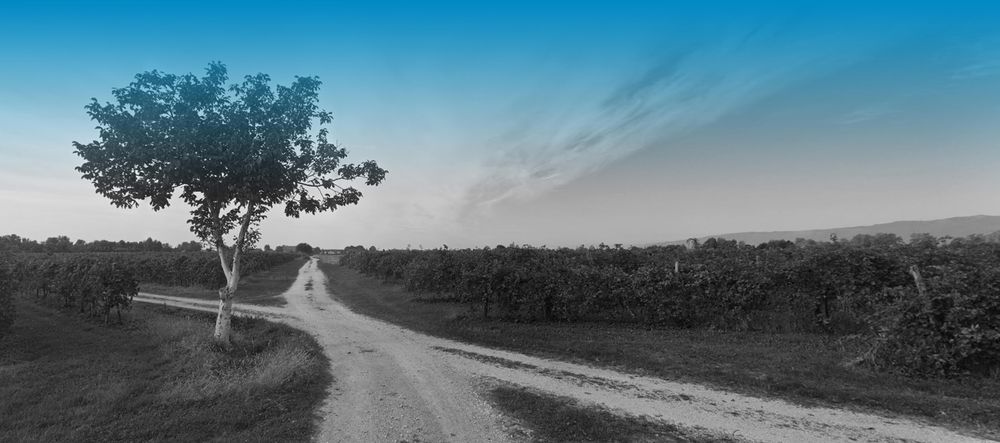
Ancient centuriation of Iulia Concordia
Where the ancient Romans farmed
Remnants of the ancient centuriation of Iulia Concordia can be found in the countryside northwest of Casarsa della Delizia.

Church of San Gottardo
The sentinel of the ford
Like others along the Tagliamento, the small church was built to provide safety and spiritual protection to the many wayfarers, pilgrims, and merchants who crossed the river daily, often facing life-threatening dangers. Built in the 18th century, it has retained its original form, featuring a sturdy portico in front of the façade to provide hospitality and shelter to passersby.
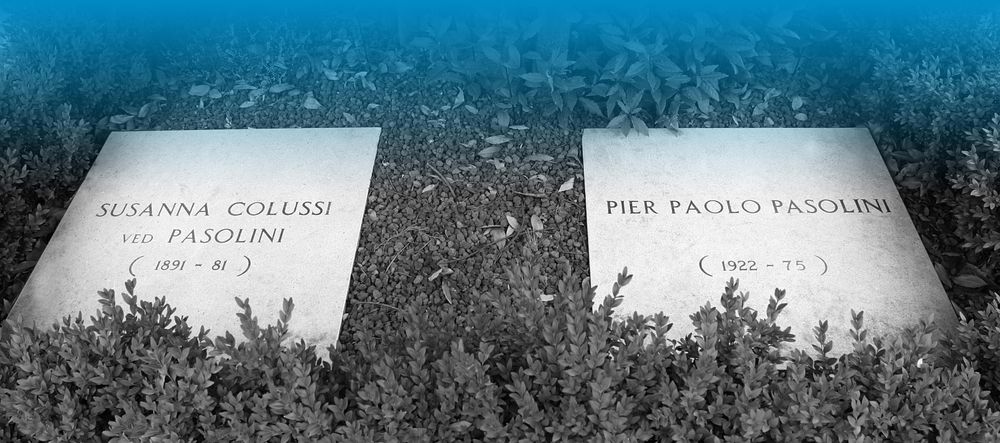
Pasolini's Grave
Where the great Pasolini rests, and his ideas live on
In the Casarsa cemetery, you'll find Pasolini's grave to the left as you enter. Designed by the esteemed architect Gino Valle in the late 1970s, it features a simple karst stone slab nestled in a boxwood edging, engraved with "PIER PAOLO PASOLINI (1922-75)." The grave lies next to his mother's, Susanna Colussi. A tall laurel shrub, symbolising all poets, creates a lush, evergreen backdrop to Pasolini's final resting place.
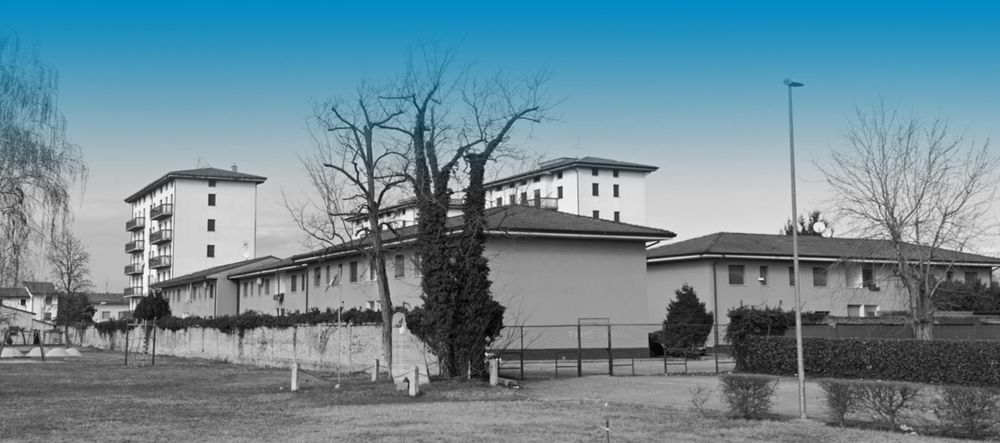
Former Di Prampero Barracks
The large barracks are now a playground
The remnants of the walls at the former Di Prampero Barracks in Casarsa della Delizia, on Via Roma, reveal a piece of local history from the First World War. These sections of the perimeter walls retain a special meaning, bringing back memories of the past and underscoring their significance in Italy's military history.
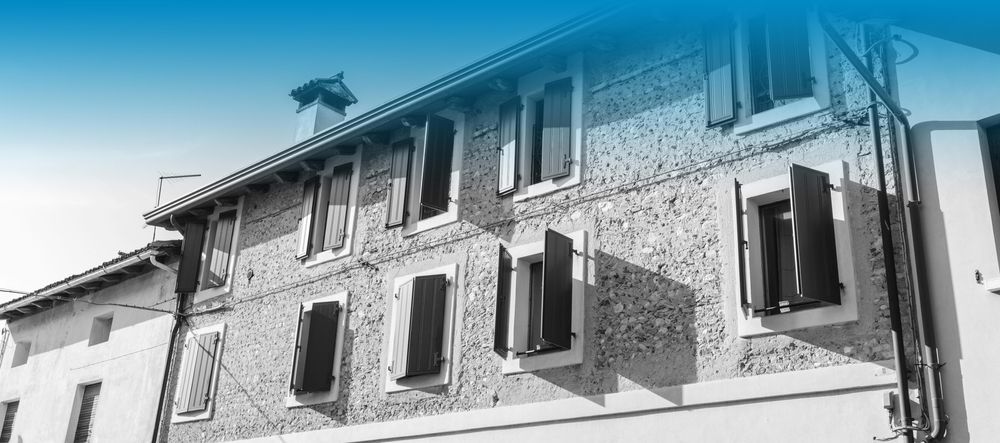
Via Menotti (Borc di Zora)
The oldest street in Casarsa
The main street, where traces of rustic architecture, including gates and courtyards, are visible. Notably, there is a stone frame featuring the Colussi family coat of arms from 1605.
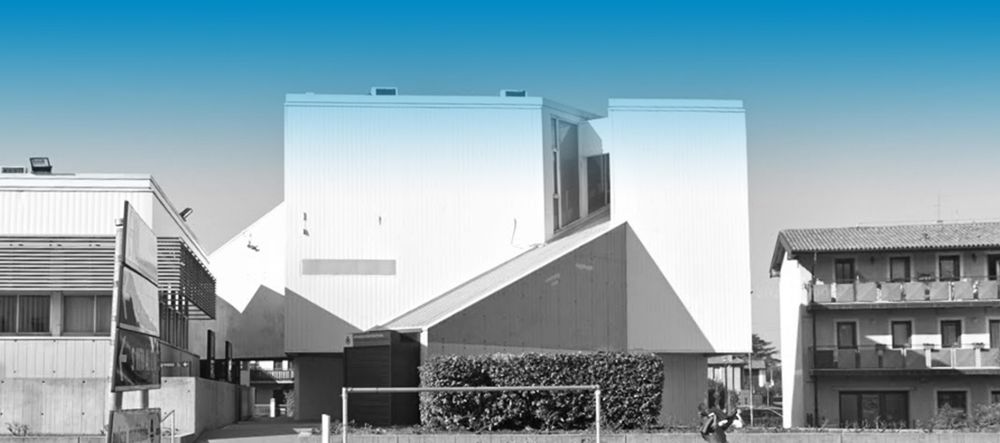
Former Town Hall of Casarsa della Delizia
The House of Art and Health
This modern building, designed by the talented Udine architect Gino Valle, is a gem highlighted in all contemporary Italian architectural digests. It is an absolute must-see for anyone who loves contemporary architecture. The building consists of three sections featuring reinforced concrete structures on a platform intersected by a public path. Developed in collaboration with Piera Ricci Menichetti, the project took shape in several stages from 1966 to 1968 and was completed in 1974.
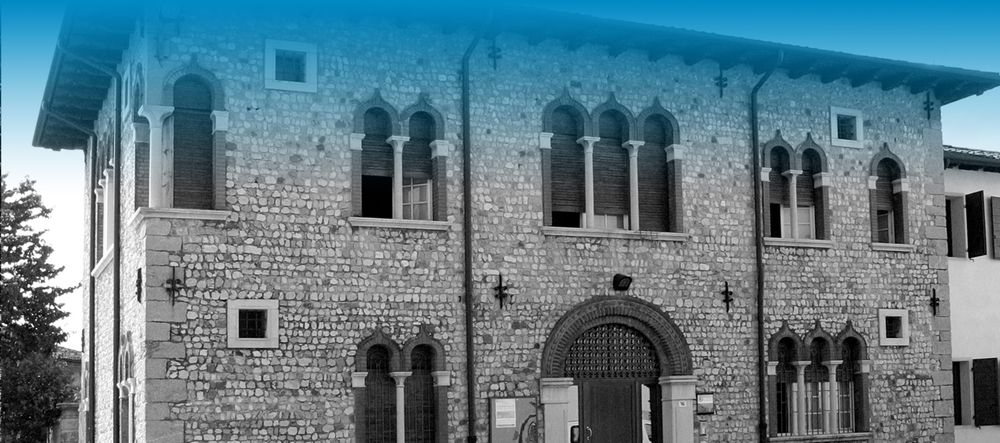
Former Rectory of Casarsa della Delizia
An homage to Venetian Gothic
Next to the church of Santa Croce is the former rectory, a stone building designed by architect Rupolo in the early 1900s.
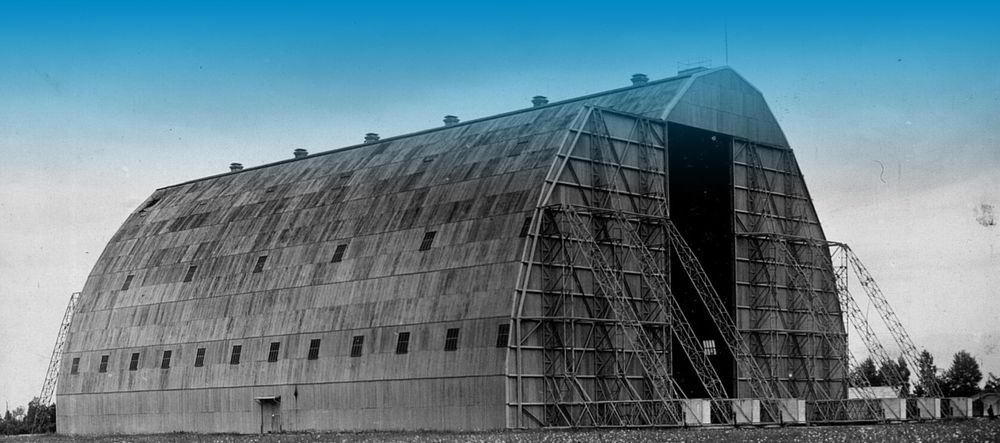
Former Airship Hangar - Baracca Airport
Where the giants of the air were based
Built in 1915, the Airship Hangar was an impressively large wooden structure specially designed to house the enormous airships used during the First World War.
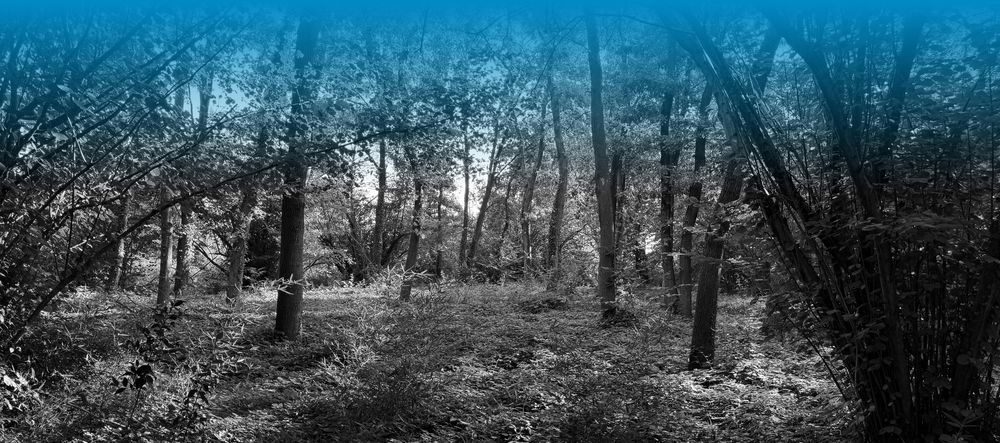
Pulisuta Nature Area
Peat bogs and resurgence pools of the Friulian plain
Pulisuta is a protected natural area in Casarsa della Delizia, in the hamlet of Boscàt. It is an extraordinary biotope characteristic of the Friulian plain, featuring peat bogs and resurgence pools.
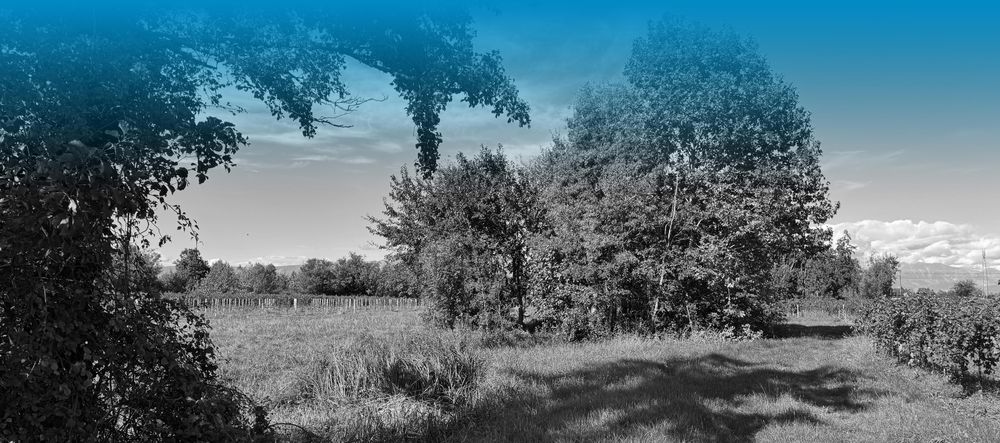
Sile River Springs
The river that rises in Casarsa
The springs of the Sile River, situated in Casarsa della Delizia, are a remarkable hydrogeological gem in the heart of Friuli. These clear spring water pools, filled by a deep water table, give rise to the river, which flows into the Fiume River in Veneto after nearly 30 km.
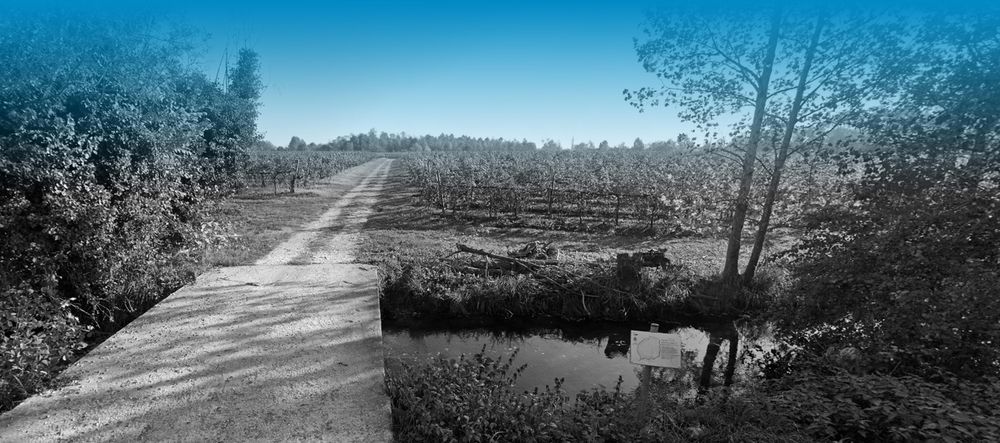
Castelliere
Prehistoric fortified settlement now a vineyard
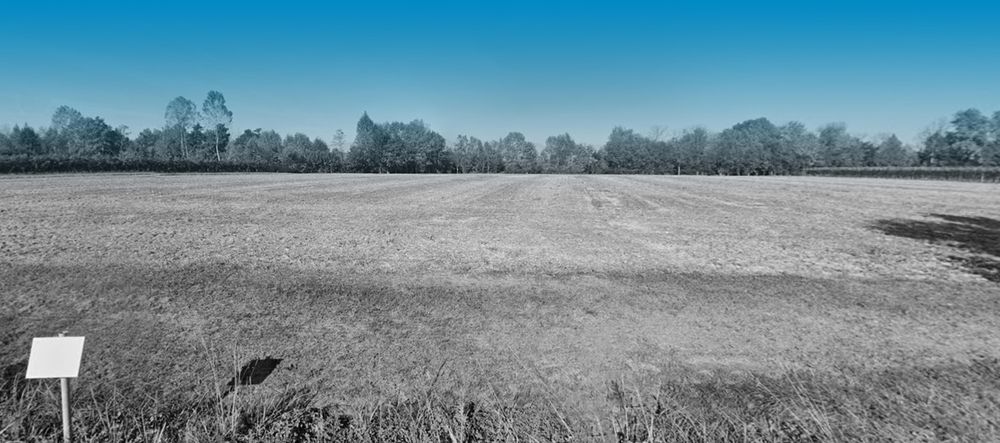
Sedulis and the ancient kiln
A green area steeped in history
It is surrounded by resurgences, waterways, and ancient archaeological remains.
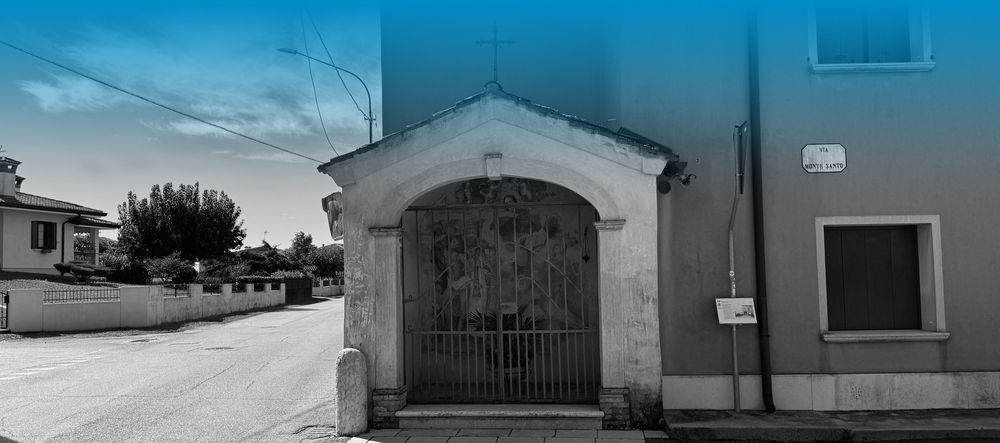
Votive aedicula and religious paintings on houses
Traces of popular devotion
In Friuli, religious shrines are often found at crossroads. Historically, even the Romans placed small temples to their gods at these locations. These spots served as places where travellers would stop and seek the gods' protection and assistance against troubles. Today, they remind us of the faith of those who built them. San Giovanni's frescoed aedicula is dedicated to Our Lady of Mount Carmel.
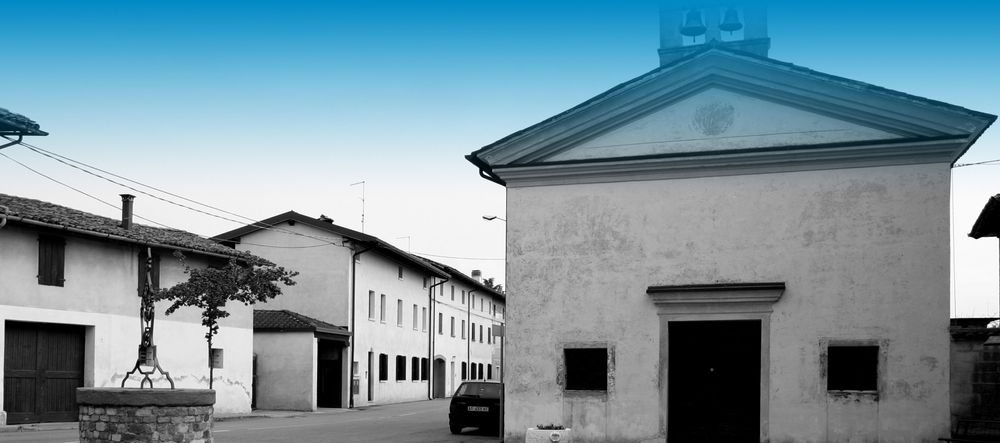
Church of Sant’Urbano at Runcis
The rediscovered altarpiece
This church's most significant piece of art, nestled in the heart of Runcis in the San Giovanni district, is the beautiful altarpiece dedicated to St Urban, the Immaculate Virgin, and St Barbara. Although it vanished in the 1940s, it was rediscovered in 2018 in the archives of Antonio Spagnol, who generously donated it to the municipality of Casarsa. Now restored, it has returned to its original home.
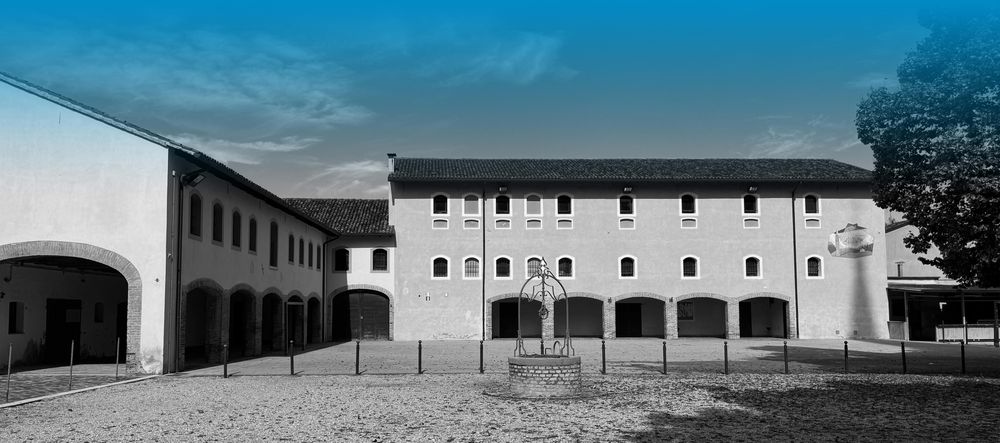
Corte Zuccheri (San Giovanni Parish community centre)
A large enclosed courtyard complex dating back to the Middle Ages.
A large enclosed courtyard complex dating back to medieval times, it has been used mainly for agricultural purposes in recent centuries, with cellars, stables, warehouses, and tool sheds. Today, it houses the community centre of St John's Parish.
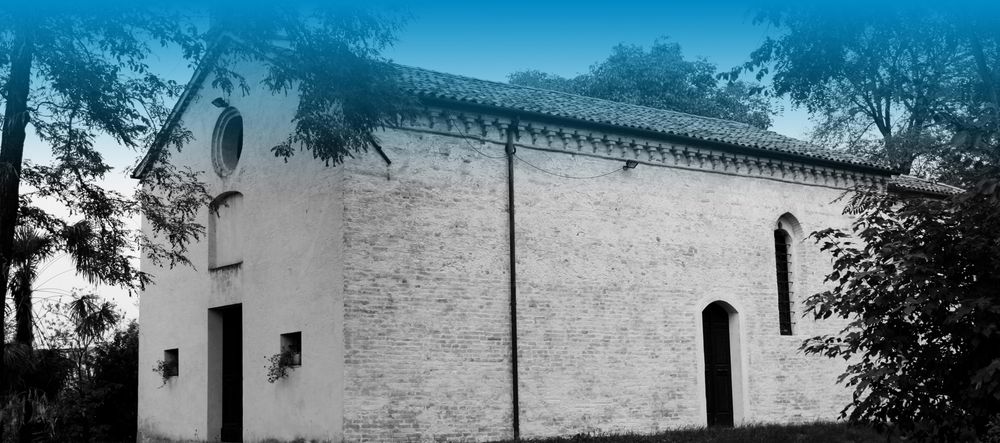
Church of San Floriano
Ties with Austria in the middle of the countryside
Open only during the recitation of the rosary (May and October) and on special visiting days, this church, nestled in the countryside, gives its name to the southernmost houses of San Giovanni. St Florian was a Roman centurion from Lorch in Noricum (now Austria) who died a martyr. His story is depicted in the cycle of frescoes from the school of Pomponio Amalteo.

Scaramuccia Tower
Controlling the road to River Tagliamento
Rising on the far eastern edge of the fortified town of San Vito al Tagliamento, the Scaramuccia Tower, also known as the Tower of San Nicolò, has stood for centuries, telling the history of San Vito when it guarded the road leading to the fords on the River Tagliamento.

The medieval Complesso dei Battuti
Where all pilgrims were welcome
The Old Hospital of the Confraternity of the Battuti in San Vito al Tagliamento was established in 1369 by the Confraternity of the Battuti to offer shelter to poor pilgrims and the sick. Over the centuries, it underwent various changes but continued to function as a hospice until 1877.

Church of Santa Maria dei Battuti
The Amalteo wonder
The Church of Santa Maria dei Battuti is steeped in history. Built in the late 15th century to serve the Hospital of the Confraternity of the Battuti, it showcases a Gothic façade with a Renaissance portal. Inside, there is a single central nave with a polygonal apse. The church proudly displays an important cycle of frescoes by Pomponio Amalteo and Il Pordenone.

Duomo Santi Vito, Modesto e Crescenzia
The dream of the last Patriarch
Almost like a backdrop to the large stage in Piazza del Popolo, the cathedral stands majestically in the heart of San Vito al Tagliamento. Built in the mid-18th century to a design by Luca Andrioli, it stands on the foundations of an earlier 15th-century place of worship, highlighting centuries of devotion to the patron saints. Strongly sought-after by the last Patriarch of Friuli, Daniele Delfino, the church is a masterpiece of Friulian Baroque, blending art, history, and faith.

GianGiacomo Arrigoni Theatre
Something amazing on stage
Situated in the upper hall of the Loggia Pubblica, the little theatre has been meticulously restored to its 17th-century splendour and function. It beautifully exemplifies the style of a small Italian theatre from the 18th and 19th centuries. Recently renamed after San Vito's beloved composer Giangiacomo Arrigoni, the theatre now sparkles with the same magnificence it had during the 19th and 20th centuries when it was the heart of entertainment in San Vito.

Palazzo Rota
From noble palatial residence to town hall open to everybody
The residence was built as a Venetian-style manor house in the late 15th century. The complex includes the main building, adjoining service buildings, and a noble chapel facing the road. The palazzo has the typical layout of a Venetian manor house, with a tripartite plan on three levels. It features lavish halls and rooms with beautifully decorated walls and ceilings. On the ground floor, there is a uniquely stuccoed hall. The villa also boasts beautifully manicured Italian garden.

Raimonda Tower
The gate was commissioned by the great Patriarch
A large medieval square tower featuring ground-floor arches for transit, commissioned by Patriarch Raymond.

Castle of San Vito al Tagliamento
Symbol of the Patriarch's power
In the heart of San Vito al Tagliamento stands the castle, the last stronghold of the Patriarchs of Aquileia. These bishop-princes, who ruled Friuli during the Middle Ages, made this their home even after the Venetian conquest in 1420, staying until 1751. Nestled in the historical centre with an entrance from Via Marconi, the castle has undergone many modifications over the centuries, giving it a more elegant appearance rather than a military one.

Palazzo Tullio Altan
The Count's abode
Framed by a stunning Italian garden, Palazzo Altan was built in the 17th century on an older building purchased by the Altan Counts. In the late 18th century, a neoclassical oratory was added. The palatial residence is flanked by two barchessa (typical long barns fronted by an arched portico) and an exedra on the east. The interiors showcase paintings by German artist Anton Joseph, stuccoes and frescoes in the 18th-century library, and literary-themed frescoes on Leandra Altan's bedroom ceiling.

Grimana Tower
The gate leading south
The Grimana Tower was built in the 16th century at the behest of Patriarch Grimani to enhance the defensive system of the village's southeastern area.

Old Jails
The place where Austrian justice was administered
The old jails of San Vito, built during the Habsburg era in the early 19th century, are situated beyond the west side of the ditches at the junction of Via Filippini and Falcon Vial. The building features a semicircular ashlar wall that encloses a little courtyard. On the ground floor, there are two small cells in addition to the caretaker's living quarters. The upper floor houses five detention rooms. The building retains its original layout, and the interior is exceptionally well-preserved.

Church of San Giuliano
Dedicated to the Sbrojavacca family
The history of the Church of San Giuliano is intertwined with that of the castle of the noble Sbrojavacca family, which once proudly stood here before being worn down over the centuries. Today, only a tower remains, lending its name to the locality of Torrate, where the church was rebuilt in the 17th century by its noble owners. This area is now part of the Torrate Resurgence Nature Park.

Church of San Liberale
Dedicated to the Roman saint
The Church of San Liberale, dating back to the early 16th century, showcases its historical significance despite alterations over the centuries. Dedicated to the esteemed local saint, Liberale, born in the ancient Roman city of Altino, it features frescoes by the Bellunello school, remnants of a larger cycle that has was lost due to the challenges of time.
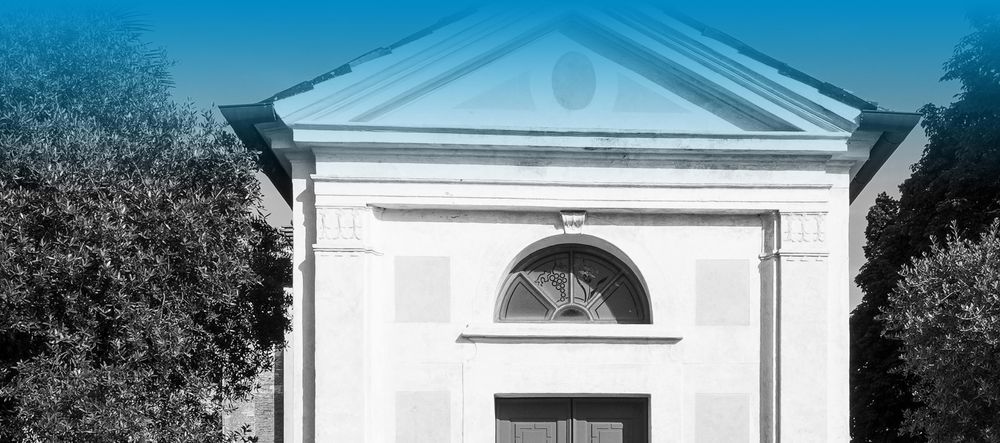
Oratory of San Giuseppe
In the heart of the town centre
In 1794, the Rambaldini family built the Oratory of San Giuseppe right in the heart of Chions. However, it fell into disrepair over the following decades, prompting the renowned composer and organist Giovanni Battista Cossetti to restore it in the 1930s.

Church of Sant’Urbano a Marignana
At the intersection of art and faith
Records indicate a church existed in Marignana as far back as the 17th century, but the current place of worship results from renovations between 1937 and 1939. The building features clean lines and a distinctive entrance porch that enhances the façade. Inside, there are recent pictorial decorations.

Church of Ognissanti in Bagnarola
The lost and found fresco
The parish church of Bagnarola dates back to at least 1300. However, extensions and renovations have altered its original design over the years. The most significant changes took place in the late 19th century. During that period of demolition and reconstruction, the delicate artwork Compianto sul Cristo Morto (Lamentation over the Dead Christ) by Amalteo, a notable figure of the Friulian Renaissance and son-in-law of the renowned Il Pordenone, was discovered under a layer of plaster.

Santa Maria della Salute parish church
A church that is not so old
Designed by Udine architect Pietro Zanini, the church has been a central landmark for the Ramuscello di Sesto al Reghena community since its foundation in 1935. Its distinctive features include the twentieth-century architectural style and the red brick façade. Inside are frescoes by Triestine painter Luciano Bartoli, created in 1963, depicting the Stations of the Cross.

Palazzo Beccaris Nonis
A Late Renaissance building in the heart of the Borgo, it is compact and sturdy yet still looks wonderfully balanced, fronted by a large portico. The building is named after two important families, the Beccaris and the Nonis, who built and lived in it. The door is framed by a rough stone arched portal. Inside, there is a beautiful painting of the Madonna and Child. It is a private home.

Palazzo Agricola (also Palazzo Bozza Marrubini)
Stately homes for noble families
Opposite the Castle are two buildings: Palazzo del Capitano (also called Bozza-Marrubini) and Palazzo Agricola (named after the Udine family who owned it in the 18th and 19th centuries). These medieval buildings were homes for administrative staff and later became grand houses. Now a private residence, it is open to visitors on specific dates and during special events.

Church of Sant’Andrea in Cordovado
The new cathedral
The new cathedral not only serves as a place of worship but also showcases a blend of ancient and modern works of art. It provides a connection to the previous parish church, from which several significant artworks were transferred. Mariano Pittana beautifully designed the cathedral, which was constructed in 1950.

Church of Sant’Urbano in Suzzolins
On the border
This church, originally built in the 17th century, was remodelled over the next two centuries. It is the last church in Cordovado and Friuli Venezia Giulia before reaching the Veneto region, which starts a few meters away in Teglio. The altar features an 18th-century altarpiece by Giuseppe Buzzi depicting the Last Supper. Nearby is a Madonna with Child and Saints, a contemporary piece by an anonymous artist from Veneto.
©️ 2024: Pro Casarsa della Delizia APS via Zatti 1, 33072,
Casarsa della Delizia (PN)
Tel. +39 0434 871031
Cell. +39 338 7874972
Email segreteria@procarsa.org
PEC
procasarsa@pec.unplifvg.it
CF 91002390937 - P. IVA 01237500937 - SDI M5UXCR1
www.procasarsa.org








